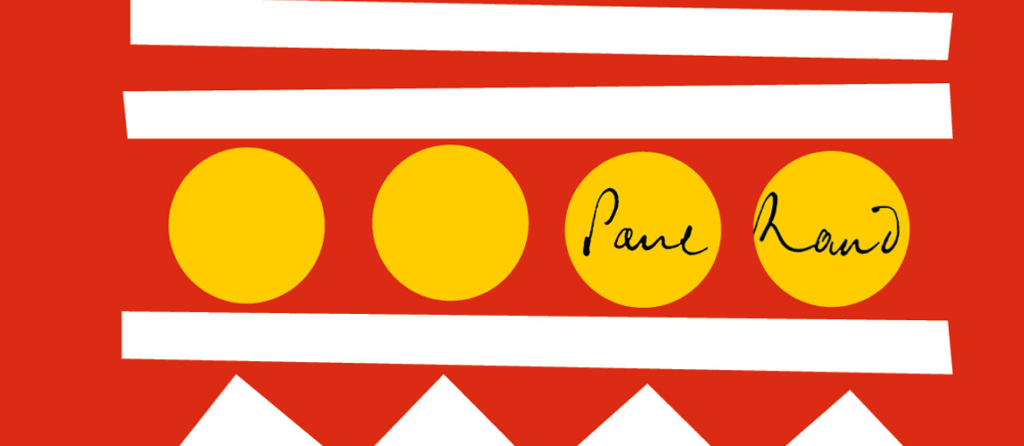It is not easy to begin an article on Paul Rand. Where does one start? One could start with something that almost everyone knows, the brand name of a well-known company like IBM. Then talk about this very long collaboration, which began in 1956. Rand in that year made an initial trademark, and then arrived, after various modifications, at the 8-bar version of 1972. Version still in use today, net of minor variations. While working with IBM Rand produced the brand manual[1] and then in 1981 a poster that became practically another IBM brand, the Eye-Bee-M poster.
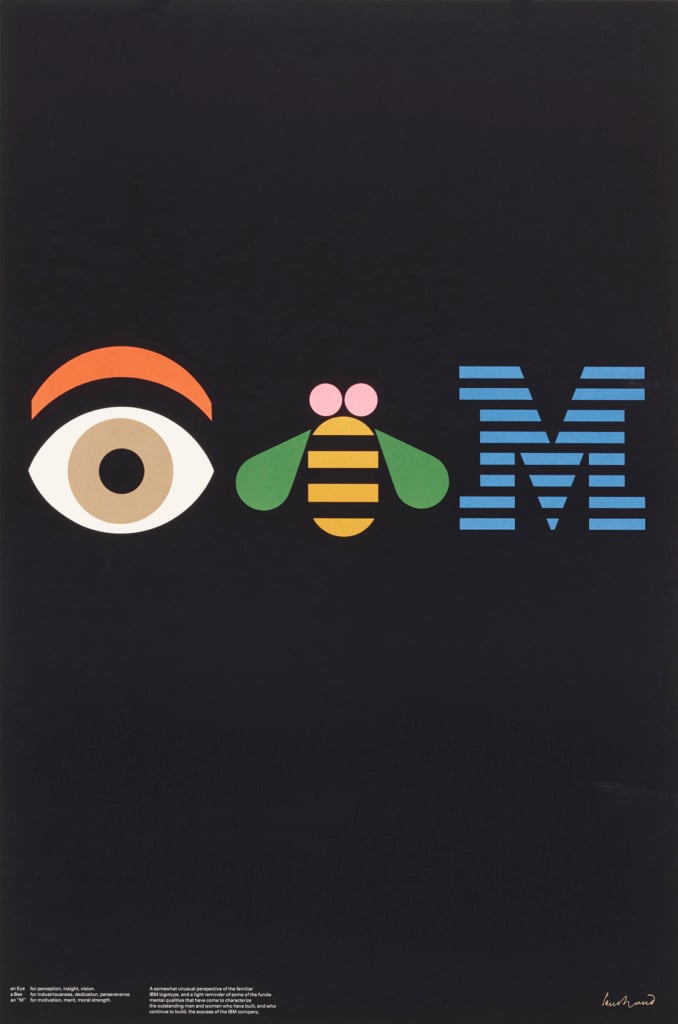
Thoughts on Design
In 1956 Paul Rand was 42 years old and for the past couple of years had been starting a new career in corporate identity design, leaving the world of advertising. (We discuss this later below.) A decade earlier, in 1947, at age 33, he had already published Thoughts on Design[2]. A small book full of insights and reflections on graphic design that are still very valid today. Rand talks about her idea of graphic design, the “graphic designer’s problem,” the representation of an image and the use of typography, especially in advertising. Pentagram partner Michael Bierut, in the preface to the 2014 reprint, writes of it as the best book on graphic design: “a manifesto, a call to arms, an illuminating description of what good design is.” As Paul Rand writes about good design, “if it is irrelevant, it is useless.”
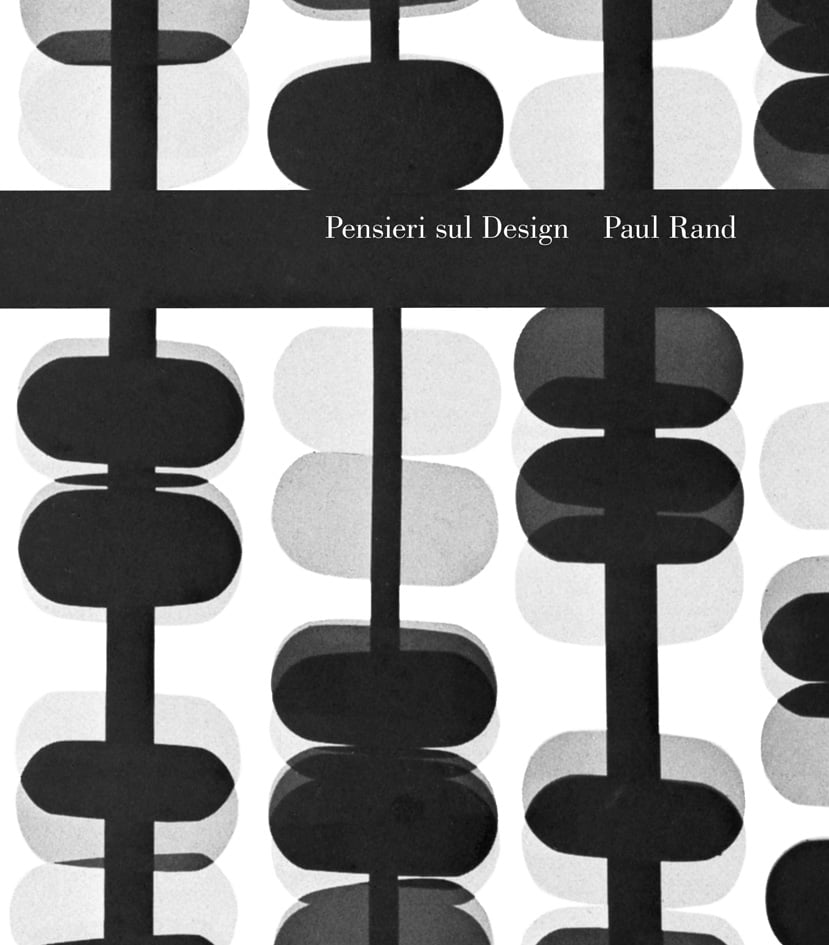
Graphic design-which satisfies aesthetic needs, respects the laws of form and the requirements of two-dimensional space; which speaks using semiotics, sans-serif and geometry; which abstracts, transforms, translates, rotates, dilates, repeats, reflects, subdivides and groups-is not good design if it is then useless.[3]
Work in publishing: collaborations with Esquire, Apparel Arts and Direction
Thoughts on Design” come after 10 years of graphic design work, including magazines and advertising. At a very young age (at 22), he began occasional collaborations with “Esquire” magazine, designing promotional material. After a short time, he is assigned to follow “Apparel Arts,” a quarterly magazine attached to “Esquire,” for which he creates a series of beautiful covers. He collaborated with another magazine, “Direction,” often working for free in exchange for full creative freedom. Before he began working, Rand attended Parsons School of Design in New York (his hometown), never completing his studies. He always considered himself self-taught. Studying European modernism on his own, he was one of the first American graphic designers to follow and experiment with its methods and approaches.
His magazine and advertising layouts combine functional simplicity with abstract complexity. Devoid of ornamentation, every detail is designed to attract attention and convey a message. Yet nothing was stereotypical.[4]

Work in advertising
At age 27, in the 1940s, Paul Rand is creative director of the agency William H. Weintraub & Co. He marks the world of Mad Men advertising by introducing clarity and modernist style.
Visual communications of all kinds, whether persuasive or informative, from billboards to birth announcements, should be seen as the embodiment of form and function: the integration of the beautiful and the useful.[5]
Bierut writes that in those years when advertising agencies sought to hire a graphic designer they often specified “Paul Rand type,” without adding anything else. Everyone knew what that meant. Also working at the William H. Weintraub & Co. agency was a young copywriter named Bill Bernbach. A few years later he would found Doyle Dane Bernbach (DDB), sparking the so-called creative revolution in advertising. For both of them it was a fruitful meeting. Rand compares meeting Bernbach to Columbus’ discovery of America, “It was my first meeting with a copywriter who understands visual ideas and doesn’t come in with a notepad and preconceived ideas of what a layout should look like.”[6]
Before founding DDB, Bernbach switched to the Grey agency while continuing to work with Rand on campaigns for Ohrbach.
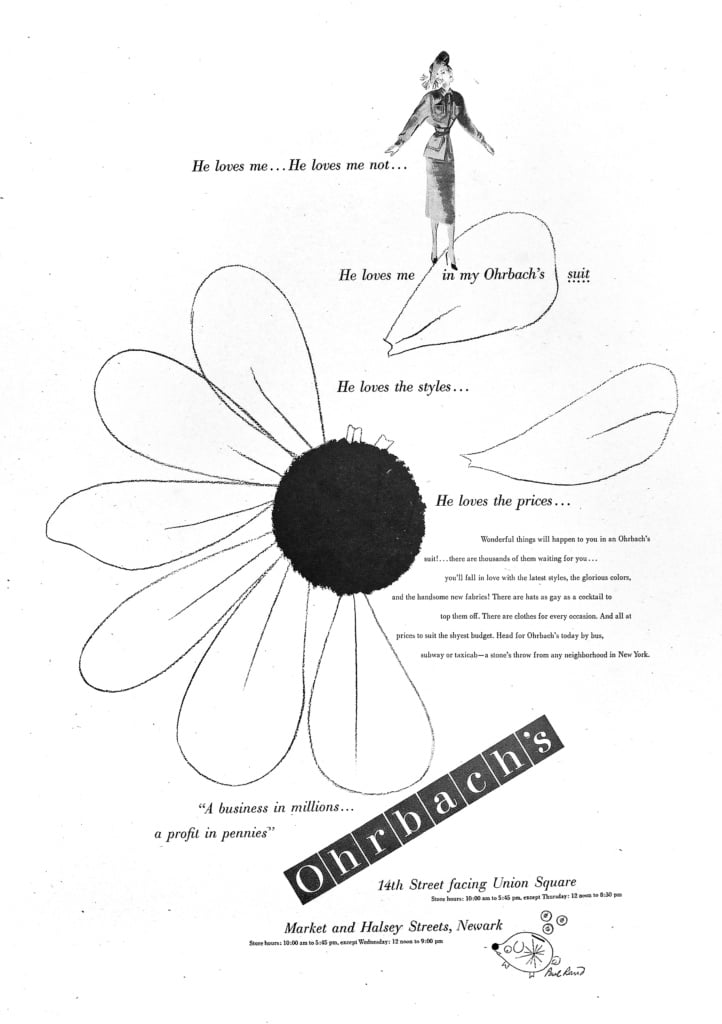
The design of corporate brands
Rand left the advertising world in 1954-the year she won a prestigious Art Directors Club award for a campaign for RCA (Radio Corporation of America)-to focus on corporate visual identities.
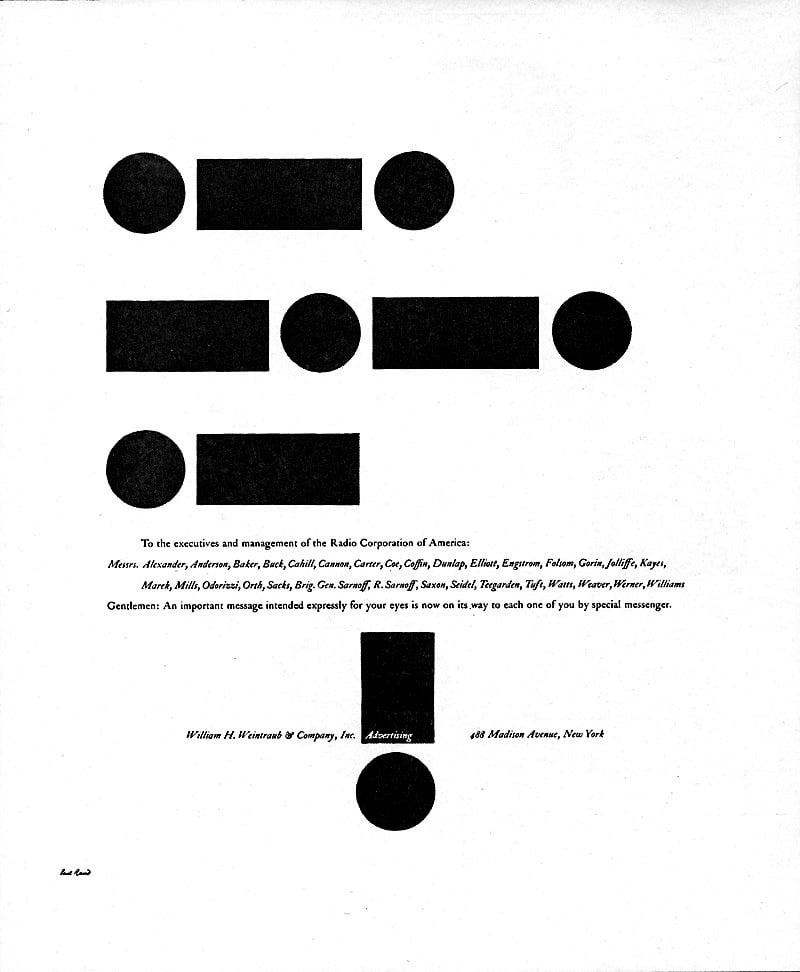
In addition to the aforementioned work for IBM, Rand creates many brands for large American companies and institutions, such as the ABC television channel, UPS, Yale University, and American Express.
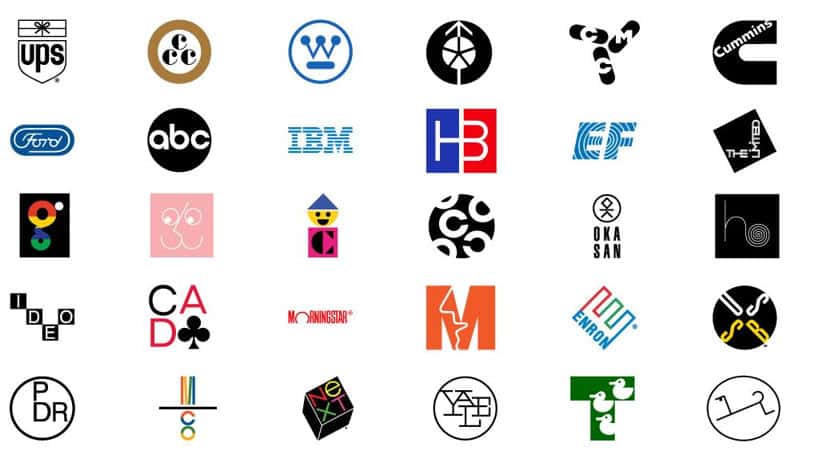
In 1984 Rand is on the list of the 30 most influential graphic designers ever, in a special issue of Idea Magazine, along with such names as Herbert Bayer, Josef Müller-Brockmann, Giovanni Pintori, Jan Tschichold, Eric Gill, Charles Eames, Max Bill, László Moholy-Nagy.
NeXT’s brand.
At 72, Rand makes a brand that has survived the company for which it was designed. The brand of NeXT, a company founded by Steve Jobs after he was kicked out of Apple, which Apple itself would later acquire.
In the biography of Steve Jobs, written by Walter Isaacson, the episode of Jobs’ meeting with Rand is reported. Rand was working for IBM, Jobs wanted to work with him at all costs, and after much insistence he managed to get permission from IBM. NeXT’s new computer would be a cube. Rand liked the shape so much that he immediately decided that the brand would be a cube. Isaacson writes:
When Jobs asked him if he should expect different options to be evaluated, Rand declared that he did not create different options for customers: “I solve your problem and you pay me,” he told him. “You can use what I produce, or don’t use it, but I’m not going to give you alternative solutions, and either way, you have to pay me.” Jobs admired that kind of attitude. He recognized himself in it. So he took the gamble. The company would pay the astonishing flat fee of $100,000 for having a trademark. “There was great clarity in our relationship,” Jobs would comment. “He had his own purity as an artist, but he was also adept at solving business issues. He was apparently tough and had perfected an image of himself as a sourpuss, but inside he was a softie.” Purity of artist: for Jobs that was one of the greatest compliments.
In 1996, during a lecture given at MIT at the invitation of John Maeda, Rand talks about graphic design and shows some of his work. When she talks about NeXT she remembers Steve Jobs flipping through the presentation was smiling more and more, and at one point she asked him to give him a hug. Rand told the students, “You know you’ve made a good brand when your customer wants to hug you.”[7]
From his earliest work Rand always paid close attention to presentations. Presentations accompanied by heavy binders of drafts, references and research with which he explained and illustrated the design process. On the site dedicated to Paul Rand, which is rich in content, you can see some of these presentations, including one for the NeXT brand. There is also a video on YouTube showing Rand arriving at the NeXT offices and unboxing the presentation. In the introduction Rand writes:
A presentation is a musical accompaniment to the design project. A presentation without an underlying idea cannot hide behind glamorous photos and exuberance. If it is full of meaningless words there is a risk of being ignored; if it is too relaxed there is a risk of ending up in the arms of Morpheus.
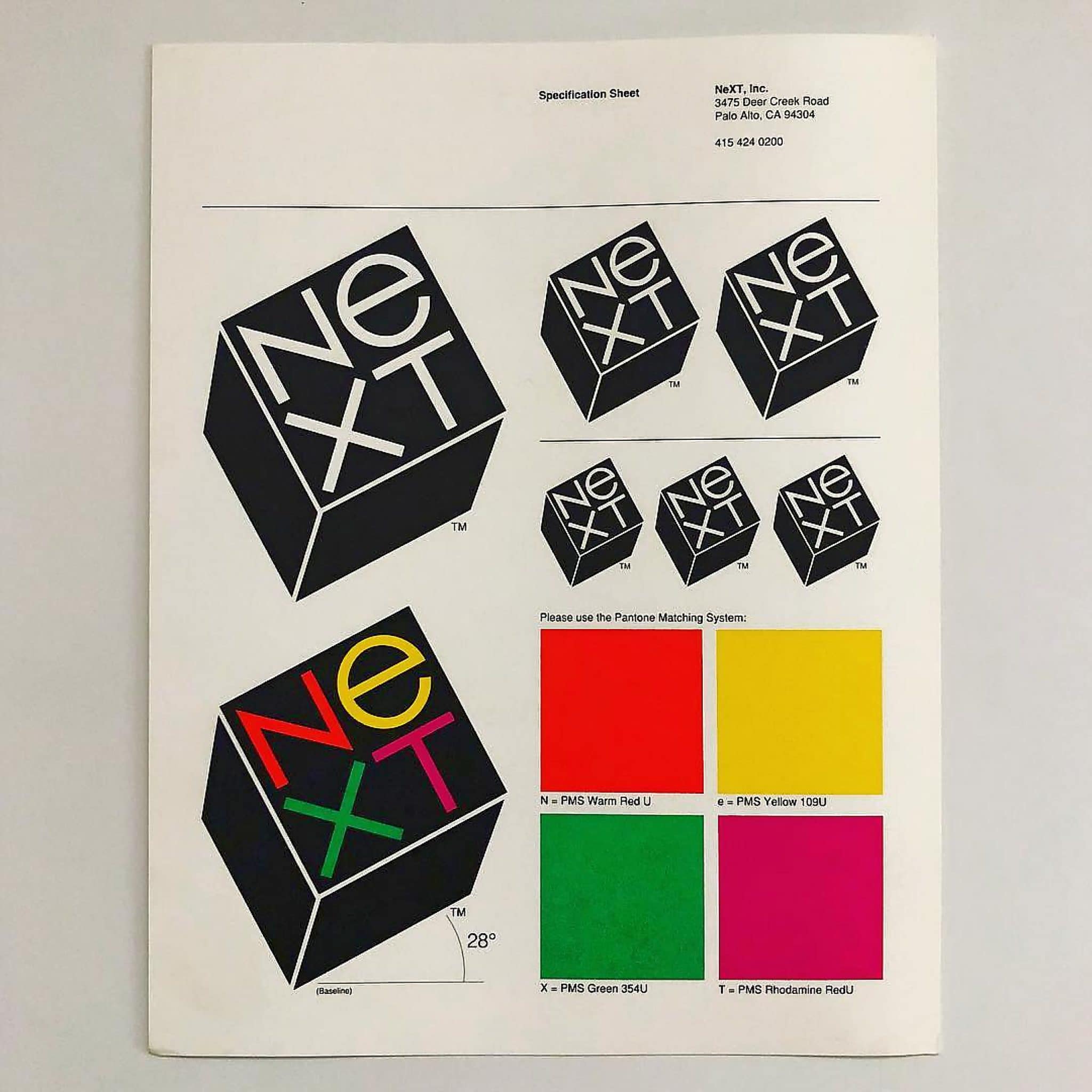
Sixty years of graphic design history
Steven Heller, in the monograph devoted to Paul Rand, highlights his impact on graphic design. He died at age 82 in 1996 and spanned 60 years of graphic design history, always leaving his mark. “In the late 1930s he transformed commercial art from a craft to a profession. By the early 1940s he had influenced the look of advertising, books and magazine cover design. By the late 1940s he defined a vocabulary of graphic design based on pure form, where once only style and technique prevailed. In the mid-1950s he changed the way large companies used graphic identity. And in the mid-1960s he designed some of the world’s most enduring corporate logos, including IBM, UPS, ABC, and Westinghouse.”[8]
László Moholy-Nagy, a Bauhaus exponent and professor, described Rand in an article for “PM Magazine” in 1941 as follows: “He is an idealist and a realist, using the language of the poet and the businessman. He thinks in terms of necessity and function.”[9]
Rand considered graphic design a service, not an art in itself, although the aesthetic and artistic part played a crucial role. Communication had to be useful, functional, but at the same time curated. His references were European modernism and advertising posters by artists such as Cassandre. He disliked communication made of stereotypes and clichés. The study and analysis of a “problem” was his starting point, only from here can the idea that produces design come out.
The 2018 auction of Rand’s work
In 2018, Wright Auction House put up for sale much of the designs Rand created during her career. To date, 99 percent of the products in the catalog have been sold at more than double the starting price.
You can browse the entire catalog either on Wright’s website or by downloading as a PDF.
Wright Catalog
[1] Graphic manual reprinted in 2018 by Empire publishing house.
[2] In 2016 the publishing house Postemedia Books published an Italian edition.
[3] Paul Rand, Thoughts on Design, Postmedia Books, 2016
[4] Steven Heller, Paul Rand: Graphic Impact, Modern Magazine, 2015
[5] Ibid
[6] Allen Hurlburt, Paul Rand: Paul Rand: The man considered by many to be one of the legends of graphic design,, Communication Arts
[7] Ciro Esposito, John Maeda e Paul Rand, 2020
[8] Steven Heller, Paul Rand: Graphic Impact ,Modern Magazine, 2015
[9] “Paul Rand” by Laszlo Maholy-Nagy, paulrand.design.

